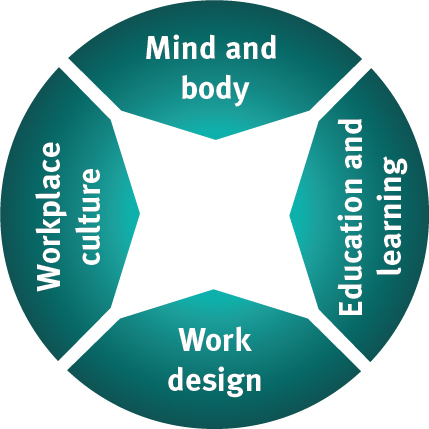Young workers, constituting 18% of Queensland's workforce (ages 15 to 24), face a higher risk of serious injuries, with around 4,400 incidents annually. In several industries, injury rates for young workers surpass those of older, more experienced counterparts. Due to their diverse nature and varying reactions, engaging and communicating with young workers require unique approaches. Notably, young workers have distinct risk profiles, susceptibility to peer influence, difficulty in perceiving risky situations, and hesitancy in expressing safety concerns or asking questions.
Four key areas impact the Workplace Health and Safety (WHS) of young workers, affecting them positively or negatively:

- Mind and Body: Understanding the unique characteristics of young workers, including risk profiles and peer influence effects, explains their increased exposure to workplace risks.
- Education and Learning: Developing young workers' capabilities through education, training, and work experience enhances their ability to assess and manage risks for workplace safety.
- Good Work Design: Ensuring work tasks, relationships, and responsibilities are designed to manage safety risks effectively contributes to better health, wellbeing, job satisfaction, and productivity.
- Workplace Culture: A positive workplace culture, driven by strong safety leadership and effective communication, is crucial for engaging young workers in WHS.
Employers are encouraged to use the Young Worker Health and Safety Toolkit to engage with young workers effectively. The toolkit provides resources, including films, presentations, and checklists, designed based on an understanding of how young people learn and communicate. Employers must understand young workers' risk profiles, ensure a safe workplace, provide information, training, instruction, and supervision, and foster a positive workplace culture.
The 'Tell me, show me, watch me' approach is recommended for task-specific inductions, emphasizing a clear explanation, demonstration, and review of tasks. Young workers are advised to actively participate in safety management, follow instructions and procedures, wear personal protective equipment, and report unsafe situations. The toolkit also includes resources for young workers to understand their rights and responsibilities in maintaining a safe and healthy workplace.
Tips for young workers
As a young worker, think about why your health and safety is important, not just for your job but for enjoying your life outside of work as well. Statistics show that you are more likely to be injured in the first few months of a new job than if you've been doing it for a while.
Your employer has a responsibility to provide a safe and healthy workplace. This means providing information, training, instruction and supervision to protect you from any risks to your health and safety. You also have responsibilities under work health and safety legislation, including:
- following all reasonable instructions
- following workplace policies and procedures
- not putting yourself or your workmates at risk
- wearing personal protective equipment (PPE) as required
- reporting unsafe situations, injuries or near-misses to your immediate supervisor and/or employer.
It is important to actively participate in the way that work health and safety is managed in your workplace. This means taking induction and training seriously, using the risk management process for your work tasks and asking for help before you start a task you're not familiar or comfortable with.
Some ways you could ask your immediate supervisor for help are:
- 'I'm not sure how this works, could you spare a few minutes to show me again?'
- 'I think I've got the hang of this, but can you watch to make sure I'm doing everything right?'
- 'I'm still a bit uncomfortable with this, would you mind explaining it/showing me again?'
